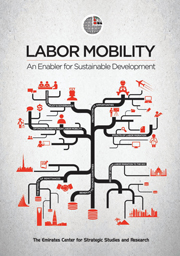Book contents
- Frontmatter
- Contents
- Figures and Tables
- Abbreviations and Acronyms
- Foreword
- Introduction
- 1 The Development Impacts of Temporary Migration and the Protection vs. Opportunities Trade-off
- 2 The Economic Development Benefits of Human Mobility to Source Countries
- 3 The Effects of Remittances
- 4 Recessions and Remittances in Home and Host Countries: An Overview
- 5 Seize the Spotlight: A Case for GCC Engagement in Research on the Effects of Labor Migration
- 6 Migration Policy and Governance in the GCC: A Regional Perspective
- 7 Optimizing benefits from Labor Mobility: The Case for Research Collaboration between Bangladesh and the GCC
- 8 Drivers of Development: The Impact of Indian Labor Migration to the GCC
- Contributors
- Notes
- Bibliography
- Index
2 - The Economic Development Benefits of Human Mobility to Source Countries
Published online by Cambridge University Press: 05 September 2014
- Frontmatter
- Contents
- Figures and Tables
- Abbreviations and Acronyms
- Foreword
- Introduction
- 1 The Development Impacts of Temporary Migration and the Protection vs. Opportunities Trade-off
- 2 The Economic Development Benefits of Human Mobility to Source Countries
- 3 The Effects of Remittances
- 4 Recessions and Remittances in Home and Host Countries: An Overview
- 5 Seize the Spotlight: A Case for GCC Engagement in Research on the Effects of Labor Migration
- 6 Migration Policy and Governance in the GCC: A Regional Perspective
- 7 Optimizing benefits from Labor Mobility: The Case for Research Collaboration between Bangladesh and the GCC
- 8 Drivers of Development: The Impact of Indian Labor Migration to the GCC
- Contributors
- Notes
- Bibliography
- Index
Summary
Human beings have been mobile, moving and settling from one location to another since the very beginning of recorded human history. Probably the first significant successful movement of humans was that from Africa, through the Great Rift Valley, some 100,000 years or so ago. This was the movement that sent modern mankind, from its birthplace in Africa, to most of the rest of the world. Throughout history, movements of people have been caused by both ‘pull’ and ‘push’ factors. Pull factors are those which enticed humans seeking better living conditions elsewhere, or perhaps just curiosity or chance and happenstance. Push factors are the local home conditions—competition for food, conflict, disease, etc.
From the late 1800s through the early 1900s pearl diving and dates were the mainstays of the economies of many of what are today's Gulf countries—the UAE, Bahrain, Oman and the other Gulf Cooperation Council (GCC) nations. Even at that time there were large numbers of workers in these countries from other nations, many of them of African descent. Currently, of course, countries like the United Arab Emirates, Qatar and Saudi Arabia have large migrant populations, now largely from Asian nations like India, Pakistan and Bangladesh.
Today, with national boundaries firm and often controlled, a great deal of migration is due to economic factors; broadly defined by people in source countries migrating to destination countries due to economic and financial incentives.
- Type
- Chapter
- Information
- Labor MobilityAn Enabler for Sustainable Development, pp. 49 - 68Publisher: Emirates Center for Strategic Studies and ResearchPrint publication year: 2013



